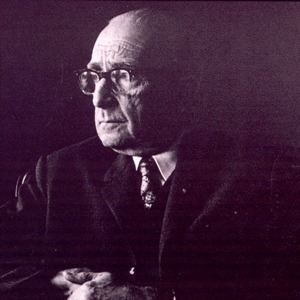
Art and literature historiographer (b. 17 February
1898, İstanbul – d. 14 February 1986, İstanbul). His full name was Ahmed Süheyl
Ünver. He also used the pen name Elif Sin in some of his articles. He entered
the Military School of Medicine in 1915, but he had to leave because of family
problems. The same year, he entered
In 1930, he was appointed as an assistant professor at
At the Institute of the History of Medicine and
Deontology, where he was the director, he established the greatest library of
its kind with handwritten and printed books, which he had collected from
donors. He also established an archive with the documents donated by doctors,
scientists, historians, literary writers, artists and their families. He
expanded the archive with every kind of object related to human life, even bus
tickets. He participated in international congresses on the history of medicine
and gave lectures on various aspects of the history of Turkish medicine. In
1939, he was involved in the establishment of the Turkish Historical Society.
He retired in 1973.
Ünver dealt with the history of Turkish medicine by
classifying it under two titles, which were “Seljuk medicine” and “Ottoman
medicine”, and studied the methods of treatment of illnesses in these periods
as well as the construction and decoration of hospitals and schools. As a
historiographer of arts, he conducted research on traditional Turkish arts,
such as miniatures, calligraphy and marbling, and the masters of these arts He
also wrote many works related to his studies.
Beginning in
After his retirement in 1973, he donated some of his
books and notes in his personal archive to Süleymaniye Library, the Turkish
Historical Society and the Institute of the History of Medicine at Cerrahpaşa
Faculty of Medicine and some works on astronomy to the Museum of the Kandilli
Observatory. In 1981, he received the Certificate for Eminent Services at the 1st
International Congress of the History of Turkish and Islamic Science and
Technology. He received the Honorary Award for Eminent Services to Turkish
National Culture from the Foundation for Turkish National Culture and the Grand
Prize for Culture and Arts from the Ministry of Culture. He is one of the
pioneers of the revival of the classic arts in the
Divan (Divan*, ?),
Sanayi Hıfzıssıhası (Hygiene in Industry, 1925), İslâm Tababetinde Türk Hekimlerinin Mevkii ve İbn-i Sina'nın Türklüğü
(The Role of Turkish Doctors in Islamic Medicine and Proving that İbn-i
Sina was a Turk, 1937), Anadolu
Beylikleri ve Tıp Tarihimiz (Anatolian Principalities and our History of
Medicine, 1938), Selçuklularda Tababet
Tarihi (History of Medicine of the Seljuks, 1939), İlim ve Sanat Bakımından Fatih Devri Albümü (Album of Science and
Arts in the Period of Sultan Fatih the Conqueror, 1943), Ressam Nigârî (Picture Painter, 1946), Kapılarda Türk Tezyinatı Örnekleri (Examples of Turkish Gate
Decoration, 1948), Hattat Ahmet
Karahisarî ve Ali Kuşçî (Ahmet Karahisarî and Ali Kuşçî the Calligraphers,
1948), Ressam Nakşî Hayatı ve Eserleri (Nakşî
the Painter, His Life and Works, 1948), Ressam Levnî Hayatı ve Eserleri (Levnî
the Painter, His Life and Works, 1948),
Müzehhip Karamanî (Karamanî the Gilder, 1951), İnce Oyma Sanatı (The Art of Intaglio, 1980).
REFERENCE: Osman Nuri Ergin / Dr. A. Süheyl Ünver Bibliyografyası (1941), İbrahim Alaeddin Gövsa / Türk Meşhurları (1946), Ünver, Süheyl (Ana Britannica, c. 31, 1986), Erguvanlar ve Boğaziçi (Babıalide Sabah, 12 Mayıs 1966), Türkiye Ansiklopedisi (1974, c. 4, s. 1399), Nuran Yıldırım / Bir İstanbul Efendisi (Yeni Yüzyıl, 14.2.1986), Gülben Mesara / A. Süheyl Ünver Bibliyografyası (1998), Mehmet Nuri Yardım / Edebiyatımızın Güleryüzü (2002), Nail Tan-Özdemir Tan / Gurur Kaynağımız Kastamonulular II (2004), İhsan Işık / Yazarlar Sözlüğü (1990, 1998) - Türkiye Yazarlar Ansiklopedisi (2001, 2004) – Encyclopedia of Turkish Authors (2005) - Resimli ve Metin Örnekli Türkiye Edebiyatçılar ve Kültür Adamları Ansiklopedisi (2006, gen. 2. bas. 2007) – Ünlü Bilim Adamları (Türkiye Ünlüleri Ansiklopedisi, C. 2, 2013) - Encyclopedia of Turkey’s Famous People (2013).